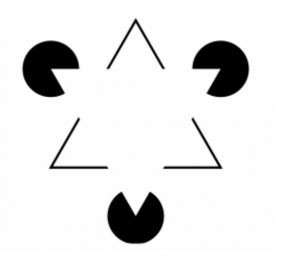In investigating misconceptions in science learning this week, I discovered that there seems to be significant tension between our desire to frame childhood development in terms of Piagetian stages while simultaneously trying to teach concepts that draw conceptually from later developments. It seems obvious from experience that we can indeed teach children concepts “beyond their stage” but we need to be aware that they see the world through a different lens, sort of like a cognitive default. For most adults at the formal operations stage, it is easy for us to accept an abstract theorem and manipulate it symbolically. We have developed a certain degree of facility in manipulating symbols and our experience has taught us that the effects of such manipulations are borne out in the real world.
For a child in the concrete operations stage, the world is focused around specific examples that can be seen, touched, and felt. Taking the example of lunar phases, which has been repeatedly show to be challenging not just for early learners but even adults, where students must extract themselves not just from their experience, but right off the planet in order to successfully conceive how the light from the sun reflects off the moon and how it can be illuminated in places we cannot see directly from the ground.
Questioning, analogies, and interactive models appear to form a powerful trio for both teaching and correcting students’ understandings of science concepts (and misconceptions). Questioning students’ conceptions to illuminate inconsistencies can cause a degree of dissatisfaction with a student present conceptions. This might be done directly in the style of a clinical interview, or indirectly through activities and experiments in which common misconceptions lead to situations that are not tenable based on the old conceptions. This is the first condition for assimilation, a shift of a learners’ conceptions to some new way of understanding (Posner et al, 1982). The next step, analogies, can drastically increase the intelligibility of an explanation, the second condition for accommodation (Posner et al.,1982). By framing an explanation in terms of other, less contentious, experiences, we can address the concrete learner in concrete terms where they are more familiar instead of with formal logic and abstraction. As the learner considers an analogy that challenges a conception or belief, presuming they recognize a genuine issue and hold a belief that there understanding should be consistent (Posner et al.,1982), they are brought to a point where they must either dismiss the new questions, assimilate, or accommodate (Posner et al.,1982). The addition of the model allows for students to test an analogy through experience rather than through abstract mental representations, a stage in which they are not yet fluent. The ability to test creates new experiences which frame the understanding of the concrete learner. The ability to rapidly test the new conception with a physical or digital model helps increase its plausibility, the third condition for accommodation. From this point, we can return to questioning to ask what this new conception might allow to be possible and then return to the model to assess it. With the possibility of new avenues for further understanding, the final condition, it seems most likely that the student will accommodate a new conception rather than modifying through assimilation or dismissing the issues raised.
Technologically, I can conceive of a computer based assessment instrument that seeks out and correct common misconceptions in this manner. The instrument proceeds as a normal diagnostic instrument until the user’s answers reveal a misconception. Further questioning would confirm the misconception. The program could then switch to a tutoring function whereby it would present analogies to explain a phenomenon. A computer based simulation would then be available to test the explanation. Video material demonstrating the possibilities of the correct conception would be presented and then the assessment would begin again. The use of simulation in this manner has already been shown to be effective in correcting misconceptions in astronomy education through the use of zoomable solar models displayed on tablets (Schneps, 2014). The students using the scale models showed marked reductions in misconceptions regarding the relative scale of celestial sizes and distances (Schneps, 2014).
Confrey, J. (1990). A review of the research on student conceptions in mathematics, science, and programming. Review of research in education, 16, 3-56. http://ezproxy.library.ubc.ca/login?url=http://www.jstor.org/stable/1167350
Posner, G. J., Strike, K. A., Hewson, P. W. and Gertzog, W. A. (1982). Accommodation of a scientific conception: Toward a theory of conceptual change. Sci. Ed., 66: 211–227. doi: 10.1002/sce.373066020.
Schneps, M. H. (2014). Conceptualizing astronomical scale: Virtual simulations on handheld tablet computers reverse misconceptions. Computers and education, 70: 269-280. Doi: 10.1016/j.compedu.2013.09.001

